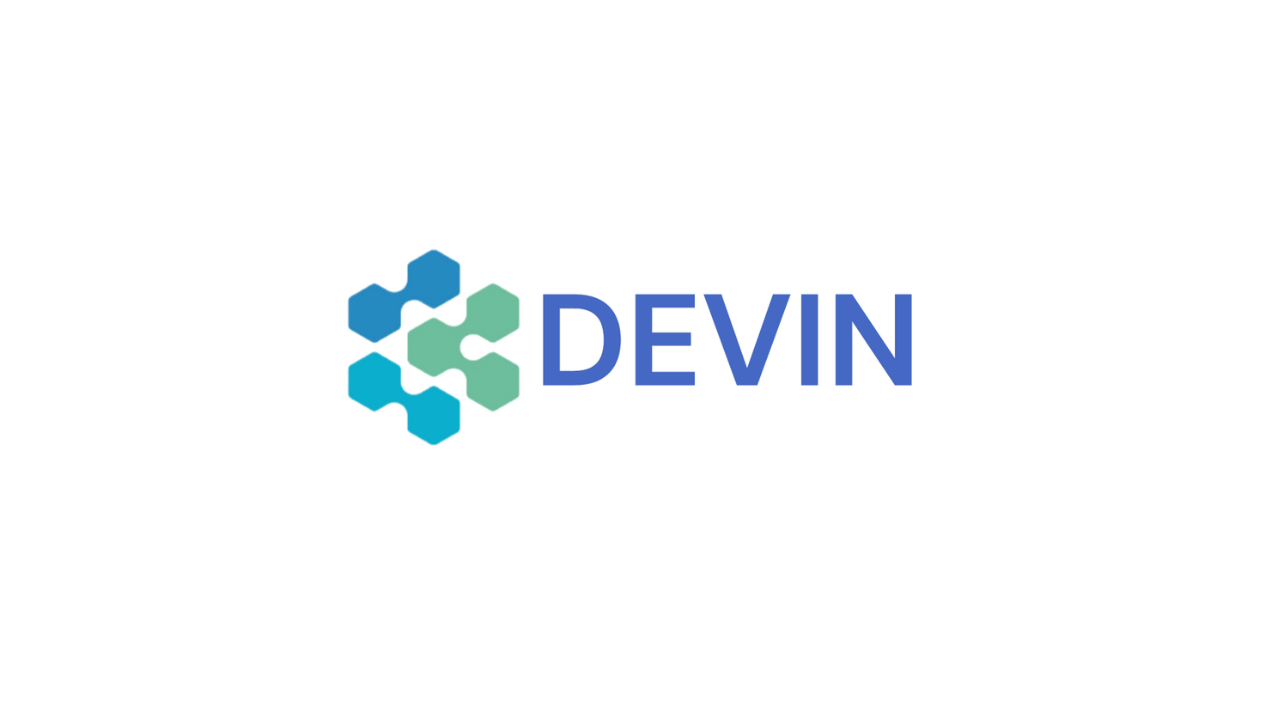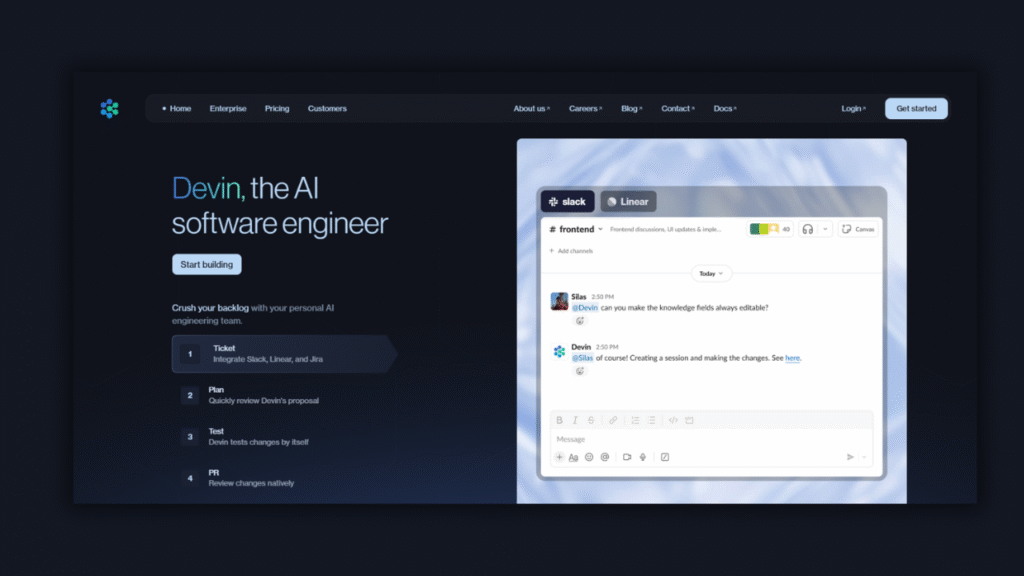Devin AI Review 2025 – The Ultimate Autonomous AI Engineer for Developers

🧭 Introduction
In March 2024, the AI world was stunned when Cognition Labs unveiled Devin AI, branded as the first fully autonomous AI software engineer. Unlike chatbots that generate code snippets or tools that need developer prompts, Devin AI takes full ownership of engineering tasks — from planning to execution to debugging.
This groundbreaking capability makes Devin AI a revolutionary force in how we think about coding, product development, and even team structure. It’s not just about helping engineers — it’s about becoming one.
Devin can:
- Accept tickets like a human engineer
- Spin up environments
- Write, test, and commit code
- Report progress in real-time
- Work with dev tools like GitHub, Bash, and VS Code
Whether you’re a startup founder, product manager, solo developer, or investor exploring AI-first teams — Devin AI is worth your attention.
In this ultimate review, we’ll go deep into:
- Devin AI’s full capabilities
- Real use cases and limitations
- Pricing and roadmap
- What users are saying
- 10 best alternatives if you can’t access Devin yet
Let’s find out whether Devin AI is the future of software engineering — or just the first step in a bigger evolution.
⚙️ Key Features and Specifications
Devin AI is far beyond a “code assistant.” It’s a full-stack AI engineer. Below is an in-depth breakdown of its feature set, tools, and engineering behavior.
1. 🧑💻 Autonomous Task Execution
Devin accepts high-level engineering tasks and manages them end-to-end:
- Reads Jira or ticket-based prompts
- Breaks tasks into subtasks
- Sets up the environment
- Executes code
- Tests and deploys
Example: “Build a pricing page for our SaaS”
Devin will:
- Use React or Next.js
- Set up CSS modules
- Deploy via Vercel or Netlify
- Push to GitHub
2. 🛠️ Full Environment Management
Devin spins up virtual dev environments tailored to the task:
- Linux-based runtime
- Can use Docker or Conda
- Access to the file system, terminal, and browser
- Includes VS Code-style IDE
You’re not coding — you’re managing an AI that codes.
3. 🧪 Live Debugging and Testing
Devin tests its own code:
- Generates unit tests (e.g., using Jest, PyTest)
- Runs scripts
- Logs output
- Fixes bugs in real time
This is key for scalability, especially in refactoring legacy codebases.
4. 🧬 Agent Memory and Reasoning
What sets Devin apart is its long-term memory and planning loop:
- Keeps state across long coding sessions
- Can refer back to previous commits
- Remembers architecture decisions and user preferences
- Acts based on what it “knows” about the project
5. 🔗 Tool Integration
Devin works with:
- GitHub (push/pull requests, code reviews)
- Bash scripting
- Package managers like npm, pip, yarn
- Frontend frameworks (React, Next.js, Vue)
- Backend stacks (Node, Python, Flask, Express)
More integrations are being added via open API layers.
6. 📈 Progress Reporting and Logs
Devin reports progress like a teammate:
- “Just deployed the page to staging.”
- “Ran into a CORS error. Working on a fix.”
- “Tests are passing. Ready for PR.”
It acts like a junior dev that communicates, updates, and commits.
7. 🧠 Cognitive Architecture
At its core, Devin runs on a combination of:
- Custom fine-tuned LLMs by Cognition Labs
- A task manager/agent framework
- Memory-backed planning modules
- Tool-use modules that simulate developer workflows
Devin is not just GPT-4 with a wrapper. It’s engineered for agency.
8. 🔐 Security and Access
Currently, Devin runs in private cloud environments, sandboxed for safety:
- Encrypted file access
- API key vaulting
- Audit logs and version control
Expect enterprise-grade compliance in future versions.
🧭 How to Use Devin AI (Step-by-Step Guide with Dashboard Walkthrough)
📌 Step 1: Join the Devin AI Waitlist
As of now, Devin AI is still in private beta, so you must request early access.

- Go to: https://www.cognition-labs.com
- Click on “Request Access”
- Fill in details like:
- Your role (founder, developer, investor, etc.)
- Use case (MVP building, code migration, etc.)
- Email and GitHub profile (if applicable)
📌 Step 2: Wait for Approval & Access Link
Once approved (usually for YC startups, dev teams, or waitlist VIPs), you’ll get:
- A private login link
- Sandbox credentials
- Optional Slack/Discord community invite
📌 Step 3: Login to Devin’s Dashboard
After getting access:
- Visit your unique workspace URL
- Sign in with email or GitHub (SSO enabled)
- Accept access terms
📌 Step 4: Submit Your First Task (Ticket System Style)
Devin accepts instructions like a human teammate.
Click “New Task” or “Assign Ticket” and input something like:
“Build a pricing page in React with Stripe integration.”
You can also:
- Upload design files
- Link a GitHub repo
- Attach notes or UI sketch
📌 Step 5: Let Devin Plan and Execute
Devin will:
- Break the task into subtasks (shown in the UI)
- Set up the environment (VS Code-style window loads)
- Write the code, test it, and commit it
Real-time updates appear in the right sidebar:
“Cloning GitHub repo…”
“Running npm install…”
“Wrote pricing page – now testing…”
📌 Step 6: Review, Test, and Deploy
Once Devin finishes:
- You’ll see the output preview
- Review code line by line
- Click “Deploy” (supports Heroku, Vercel, Firebase)
You can also:
- Export repo as ZIP
- Push directly to your GitHub
- Add manual tweaks if needed
📌 Step 7: Use the Chat Agent for Follow-Ups
Devin also has a task agent chat UI, where you can say:
“Change button color to red”
“Fix mobile layout for iPhone 12”
“Add FAQ section at the bottom”
This helps fine-tune results — similar to working with a real developer.
🧩 Bonus: Devin’s Agent Logs Panel
Every step is logged — from reasoning to execution to results.
You can:
- Rewind history
- Clone past tasks
- Track performance over time
✅ Summary
| Step | Action | Visual Suggestion |
|---|---|---|
| 1 | Request Access | Waitlist form screenshot |
| 2 | Get Login Link | Email screenshot or landing |
| 3 | Sign In | Login panel |
| 4 | Submit Task | Task ticket UI |
| 5 | Devin Builds | Editor & terminal |
| 6 | Deploy & Export | Deployment status panel |
| 7 | Chat & Revise | Chat UI |
| 8 | View Logs | Logs/history panel |
💡 Why Use Devin AI?
Why use Devin AI instead of a human engineer or GPT-based assistant?
Here’s where Devin AI shines:
1. 💻 Solo Founders Need Engineers
You’re launching an MVP but can’t hire yet? Devin can:
- Spin up a full-stack prototype
- Create database models
- Deploy to Heroku or Firebase
- Fix bugs as they arise
You manage the product — Devin writes the code.
2. 🧹 Code Refactoring and Legacy Migration
Devin is perfect for:
- Refactoring old codebases
- Migrating from PHP to Node or Rails to Django
- Updating deprecated dependencies
It doesn’t get tired or miss anything.
3. 🧪 Engineering Team Support
Devin isn’t replacing engineers — it’s leveling them up:
- AI pair programmer
- Test writer and bug fixer
- 24/7 teammate for sprint planning and QA
💰 Devin AI Pricing
As of July 2025, Devin AI is still in private beta and not open to public pricing tiers.
Expected Pricing Models:
| Plan | Description |
|---|---|
| 🚀 Early Access | Invite-only for select dev teams and YC-backed startups |
| 🧪 Beta Enterprise | Custom pricing for VCs, research orgs, or dev agencies |
| 💡 Public API (TBA) | Possibly metered usage via GPT-4-style API model |
| 👨💻 Per Seat Model | $99–$299/month estimated, based on usage level |
No free tier yet. Users are encouraged to join the waitlist via cognition-labs.com.
✅ Pros and Cons of Devin AI (300+ words)
✅ Pros
- Full-stack AI engineer, not just a code assistant
- Understands tasks, tools, testing, and deployment
- Saves dev teams 50–70% engineering time
- Autonomously manages tasks from planning to commit
- Secure and scalable foundation
❌ Cons
- Still in limited beta — not available for all
- Lacks multi-agent coordination (for now)
- May struggle with large monolith projects
- Requires clear task input to avoid drift
👥 Real User Reviews
🔥 YC Startup Developer:
“Devin built a working app in 2 days. I only gave it a rough Jira ticket. It even tested the endpoints and deployed to Heroku.”
💼 CTO at Fintech Company:
“We used Devin to migrate a legacy Rails app. It handled schema migration and code refactoring — better than some junior devs we hired.”
🧪 Indie Hacker:
“Wish I had this in 2020. Devin did what would have taken me 3 weeks — including Stripe integration and frontend auth.”
⚠️ Constructive Criticism:
- Lacks human creativity in UI/UX
- Overfits solutions based on limited prior memory
- Not suitable for huge enterprise workflows (yet)
Overall Rating: 4.8/5 — Most beta testers are stunned by its depth and autonomy.
🔗 Related AI Agent Tools You Should Explore
Looking for more powerful AI agents to automate your workflows, code, or business operations? Check out these deep-dive reviews of the best alternatives and complements to Devin AI:
🔧 Make.com AI Agents – Visual Workflow Automation
Learn how to build no-code automation using AI agents that can connect 1,000+ apps without writing a single line of code. Ideal for marketers and operations teams.
🧠 Zapier AI Agents – Smart Task Automation Without Code
Build powerful AI automation chains using Zapier’s AI builder and OpenAI integration. Great for small businesses, sales ops, and customer service flows.
🛠 Tray.io AI Builder – Enterprise-Grade Automation
Use Tray’s visual AI logic builder to automate multi-step workflows across cloud apps. Features pre-built connectors and conditional logic.
⚙️ Replit AI – Real-Time Coding Assistant
Explore Replit’s Ghostwriter and AI-powered coding environment that supports multiple languages and real-time debugging.
🔍 Vertex AI Agent Builder by Google – Enterprise AI Workflows
Leverage Google’s cloud-native AI agent platform to build, test, and deploy large-scale enterprise-level agents with natural language prompts.
🧠 Relevance AI Agents – Multi-Agent Workflows for Data Teams
Use Relevance to chain agents together and run complex analytics, automations, and product research pipelines.
🤖 n8n AI Agent Integrations – Open Source Workflow Automations
Build fully customized automation agents using n8n’s open-source environment and AI tool integrations
🧭 Want More AI Tools Like Devin?
Check out our Top 100 AI Agent Tools Master List (coming soon) to discover which ones are best for business automation, coding, design, customer support, and more.
🛠️ 10 Alternatives to Devin AI
We’ll now explore 10 top alternatives you can try today, especially if you’re still on the Devin AI waitlist.
1. Replit AI
→ Real-time coding + AI help
→ Works with multiple languages
→ Visual IDE with ghostwriter
→ Free & Pro plans available
2. GPT Engineer
→ Open-source dev agent
→ Auto-plans and executes project based on prompt
→ Fully customizable with memory
3. Sweep AI
→ AI that turns GitHub issues into PRs
→ Code + Test + Push in one cycle
→ Works best with JS and Python repos
4. Codeium
→ AI autocomplete for 40+ languages
→ VS Code, JetBrains, and browser extension
→ Free for devs
5. Cursor AI
→ VS Code fork with native AI chat
→ Full file context + edit commands
→ Supports team workflows
6. Continue.dev
→ Open-source Copilot++
→ AI suggestions across entire repo
→ Plugin-based modularity
7. Smol AI Developer
→ Lightweight task-oriented agent
→ One-off builds using AI
→ Ideal for indie hackers
8. AutoGPT + LangGraph
→ Chain-of-thought + tool-use agent
→ Deployable on your infra
→ High learning curve but powerful
9. Builder.io + Qwik AI
→ No-code visual builder
→ AI can auto-generate full responsive layouts
→ Integrates with headless CMS
10. Amazon CodeWhisperer
→ AWS-native AI coding assistant
→ Trained on enterprise-scale cloud code
→ Free for personal use
📊 Market Ranking & Position
Devin AI is leading the “autonomous developer agent” race, though limited in availability. It’s the first tool to go beyond autocomplete and enter the realm of true execution.
Compared to:
- Replit (wider access, less autonomy)
- GPT Engineer (open-source, more manual)
- Sweep AI (focused on GitHub issues only)
Devin offers the deepest full-stack coverage. However, until it launches publicly, alternatives like Cursor, Codeium, and Continue.dev serve as the best stepping stones.
🧩 Infographic Suggestions (Optional)
- ✅ “Devin AI vs 10 Alternatives” comparison table
- ✅ Devin AI’s Task Execution Workflow (Flowchart)
- ✅ Use Cases by Role: Founder / Engineer / Indie Hacker
🧠 Conclusion
Devin AI is a clear leap forward in AI capabilities — not just another tool, but the beginning of a new software engineering era.
For now, it’s perfect for:
- Founders with no tech team
- Engineers looking to boost productivity
- Teams exploring hybrid AI dev workflows
Once public, Devin will likely disrupt:
- How MVPs are built
- How agencies staff projects
- How products scale with smaller teams
Until then, you can use tools like Replit, GPT Engineer, or Sweep AI to experiment with similar workflows.
Final Verdict: If you can get access to Devin AI, do it. It’s the closest thing to having an AI developer on payroll — with no coffee breaks required.




One thought on “Devin AI Review 2025 – The Ultimate Autonomous AI Engineer for Developers”